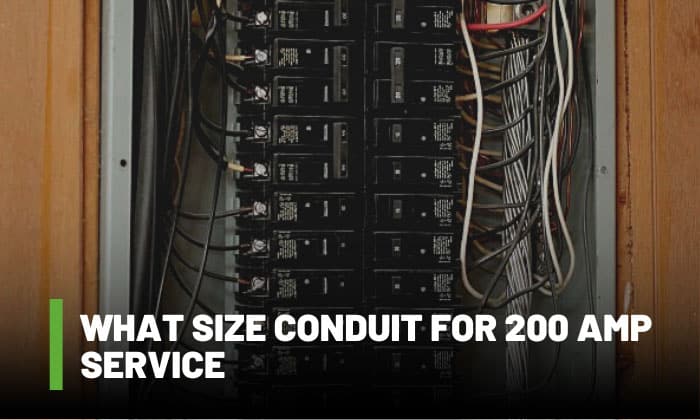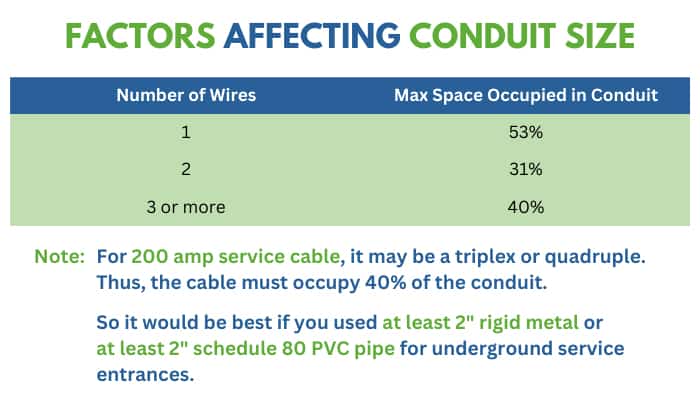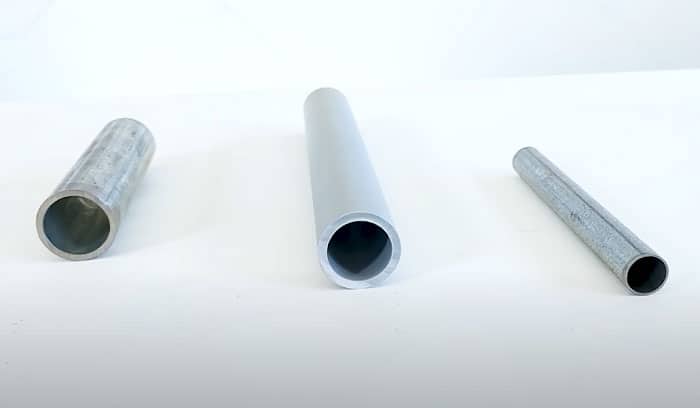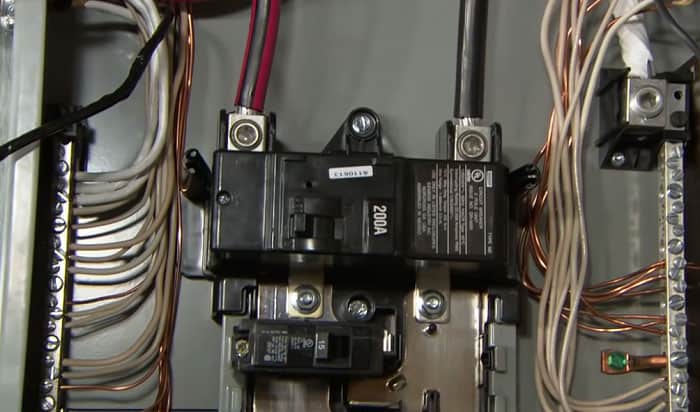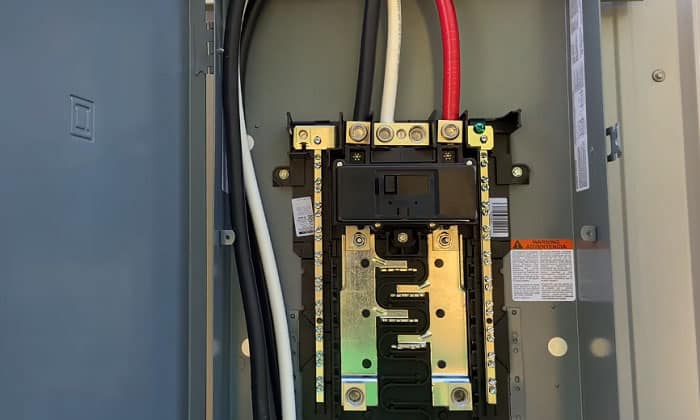Conduits protect the cables that deliver electricity in our homes. They may be rigid or flexible items that reduce damage to the cables and prevent problems, especially for a 200 amp service.
But what size conduit for 200 amp service is needed? You might need a 2-inch rigid metal conduit for 200 amp overhead service, or least a 2 inch schedule 80 PVC pipe for underground service entrances, depending on whether the raceway is subject to physical damage.
Table of Contents
Factors Affecting Conduit Size
At the very least, conduit sizes are primarily determined by the number of wires, the conduit area that the contents of the wire will occupy, as well as the number of bends. These are the minimum, and local codes may have their own additional requirements on top of them.
The US National Electric Code or NEC has the following specifications in choosing the minimum conduit size:
| Number of wires | Max space occupied in the conduit |
| 1 | 53% |
| 2 | 31% |
| 3 or more | 40% |
Usually, a 200 amp service entrance cable may be a triplex (3 wires) for single phase, or quadruplex (4 wires) for three-phase service. Thus, the cable must only occupy 40% of the conduit.
Also, the number of 90 degree bends in the conduit will also affect the conduit size. Having more than two 90 degree bends in the conduit will decrease the maximum allowable occupied space by 15%.
Ways to Determine Conduit Size for 200 Amp Service
First, to determine the 200 amp service conduit size, we have to know the wire used, especially the material. Copper wires have better current ratings than aluminum ones, so copper wires may be thinner than aluminum wires.
Also, the voltage drop must also be considered. The voltage drop must not exceed 3%, so the wires must be thicker for longer runs. For instance, a 350 feet run of copper will need 300 kcmil wires, while a 50 feet run of the same material will need 2/0 AWG.
After determining the wire thickness, we need to determine the cross-sectional area of the wires that we will use.
Determine the number of wires that will be used, calculate their total area using chapter 9 of the NEC, and check the maximum space allowable. Use the table we provided.
Lastly, select the size needed for your choice of conduit. The NEC provides several diameters for your reference in Chapter 9.
Types of Conduit
Different materials can be used as conduits. Here are some of the common ones used for service connections.
First is electrical metallic tubing, or EMT. It’s thin to the point that you can use a conduit bender for it; however, it cannot be threaded and is best used indoors and in concrete.
Next is intermediate metal conduit, or IMC. It’s thicker than EMT and suitable for outdoor applications, all while being easy to handle. However, it is also easy to bend.
Third is rigid metal conduit or RMC, which is made of galvanized steel, aluminum, or brass. This type is available in many trade sizes (from ½ to 6), but it is also expensive due to its strength. RMC conduits are connected using threaded fittings.
Fourth is rigid PVC conduit. It is non metallic and lightweight, with high resistance to corrosion and water leaks when glued correctly, making it a great option for underground and exposed areas. However, it is less stable under UV light, so it may be a poor choice under direct sunlight.
The last type commonly used is the reinforced thermosetting resin conduit, or RTRC. It’s a fiberglass conduit that’s also highly resistant to corrosion and is a good alternative to PVC.
Type of 200 Amp Service
200 amp services can either be overhead or underground. Both are acceptable types of electrical service that differ in price and looks.
An overhead service will use a service drop conductor that will bring electrical supply from the power pole to the service entrance. This is cheaper than an underground electrical service, but not as good-looking. It is also prone to damages caused by weather.
A 200 amp underground service will use a service lateral conductor, where the service cable is placed in a conduit underground to reach the meter. It costs 5 times more than an overhead service, but looks better.
What is the Minimum Size Service Entrance Conductor for a 200 Amp Residential Service?
The minimum wire size is a 4/0 AWG 200 amp service aluminum wire or a 2/0 AWG copper.
If we’re going to use an aluminum triplex cable for a single-phase setup, we will need a 4/0 AWG size neutral for 200 amp service, 2 4/0 AWG sizes for hot wires, and at least a 4-AWG bare copper wire for the ground.
Table 5A in Chapter 9 of the electrical code shows that a 4/0 AWG aluminum XHHW wire has a cross section of 176.3 mm2, while a 4 AWG bare copper wire is 22.1 mm2. Thus, the total cross sectional area for all 4 wires would be 551 mm2.
We have four wires, so the maximum occupied area for the 200 amp conduit size is 40%. If we choose to go for a rigid metal conduit, Chapter 9 Article 344 shows that the minimum trade size would be 2”, since 40% of its total area is 879 mm2 and is enough for 551 mm2 (some local codes for overhead service might have requirements like a service mast made of least a 2 inch conduit – RMC type, to be specific).
If we go for an underground service connection, which has a raceway that is subject to physical damage, the NEC lists only the following conduits allowable for underground service:
- RMC
- IMC
- Rigid schedule 80 PVC
- RTRC-XW
- EMT
- Other acceptable means
So, if we choose rigid schedule 80 PVC for our underground connection, then the 200 amp service pipe size or PVC conduit size will be 2 inches, since its 40% cross sectional area will be at 742 mm2 and is, again, enough for 551 mm2. Some would increase the size to 2.5” for easier threading of the cable in the conduit.
Conclusion
Conduits are useful to protect electrical wires, especially at the service entrance. To know what size conduit for 200 amp service is needed, look at the NEC book and follow our guide above.
Also, don’t forget to have the sizing done by a licensed electrician if you’re unsure what conduit to use. Installing a service connection is not an easy job and could be dangerous, so have it taken care of by a professional.

I am Edwin Jones, in charge of designing content for Galvinpower. I aspire to use my experiences in marketing to create reliable and necessary information to help our readers. It has been fun to work with Andrew and apply his incredible knowledge to our content.

